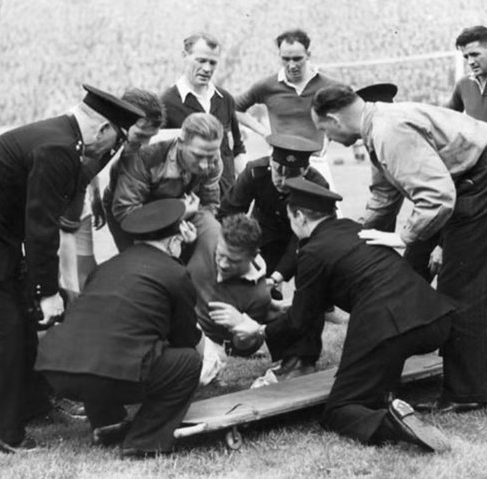The 1930 World Cup
- philippsorgenfrei
- Dec 2, 2022
- 3 min read
Updated: Dec 4, 2022
Today's newsletter will finally acknowledge that the World Cup is currently ongoing in Qatar. However, rather than debating the merits of spending an estimated $220 billion on hosting the games by the shores of the Persian Gulf, we will be looking back at a time when the World Cup was a much less commercial affair.
The first FIFA Word Cup - the 1930 FIFA World Cup was the first ever hosted under that name and took place in Uruguay from 13-30 July of that year. Uruguay was chosen because their team had just won the football* title during the 1928 summer Olympics. However, only 14 teams in total agreed to participate (with especially meagre interest from Europe given the distance across the Atlantic). The Romanian team only entered the competition after King Carol I intervened and personally selected his country's squad. The French manager just refused outright and sent his team to travel without him.
A long journey - Since 1930 was well before the advent of trans-Atlantic air travel, the European teams (Belgium, France, Romania and Yugoslavia) sailed across the ocean together on a steamship (the SS Conte Verde). They even stopped in Rio to give the Brazilian squad a ride. The Egyptian team was also planning to be on board but arrived late at the rendezvous point and thus missed the boat (and the World Cup). Also on board was Jules Rimet, FIFA's president, who carried the World Cup trophy in his suitcase.

Victoria o muerte - Having overcome the long journey, the main obstacle left came in the form of the Argentinian team determined to batter their way to victory. During their first match against France, the French goal keeper was fouled so badly that he had to leave the field after just 20 minutes. Another Frenchman played most of the game limping following a similar encounter.
And then it got worse: first, police had to intervene during Argentina's quarter final win over Chile and then Argentina went on to also beat (quite literally) the US team, of which a good portion had to be carried off the pitch on stretchers. Collateral damage included a broken leg, knocked out teeth, and stomach injuries. Even the US manager had to be carried off the field after he had rushed onto the field to confront the referee. In his haste, he had tripped and broken a bottle of chloroform in his pocket which rendered him unconscious.
The final - The final between Argentina and Uruguay did not start auspiciously either. Fans were searched for weapons and Belgian referee, John Langenus, only agreed to officiate a few hours before the game after assurances for his safety had been made (including a boat waiting for him at the harbor in case he needed to make a quick escape). After Argentina lost the match against Uruguay 2:4, it was the turn of the Argentinian fans to riot (even though a few thousand of them were still stuck on ships because the port of Montevideo could not handle the 10-15,000 supporters reported to have arrived from Argentina that day). In Buenos Aires, a mob even threw stones at the Uruguayan consulate.

A man of many talents - the most remarkable player to participate was probably Romanian midfielder Alfred Eisenbeisser Feraru. Not only was he rumored to have died during the journey back home (after he had fallen ill and taken to a hospital in Genoa), he also went on to compete for Romania at the following Olympic games in figure skating and bobsleigh.

--
*The sport is indeed called "football" - the only reasonable way to refer to a game predominantly played by kicking a ball with one's foot.





This post really resonated with me. Luiz Gustavo Mori
Very useful post, thanks for sharing this! Veronica Dantas
This blog was thorough and well-structured, thank you! Daniel Dantas